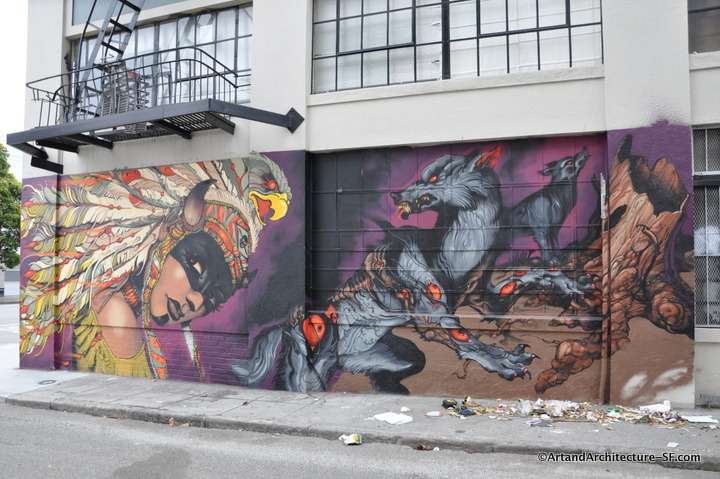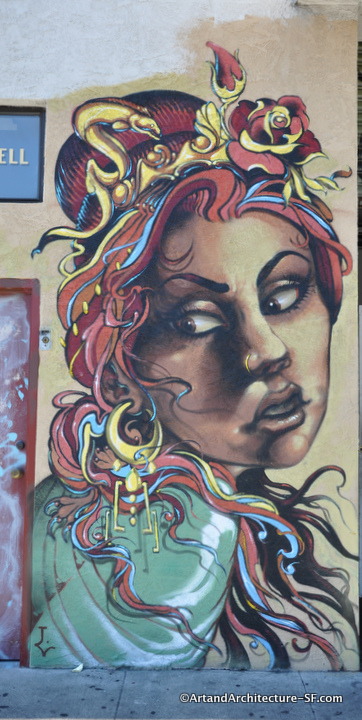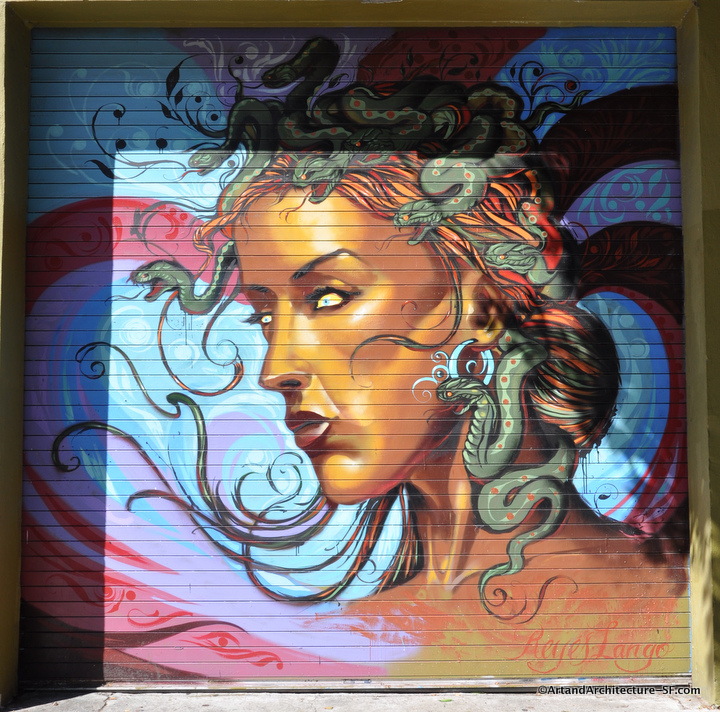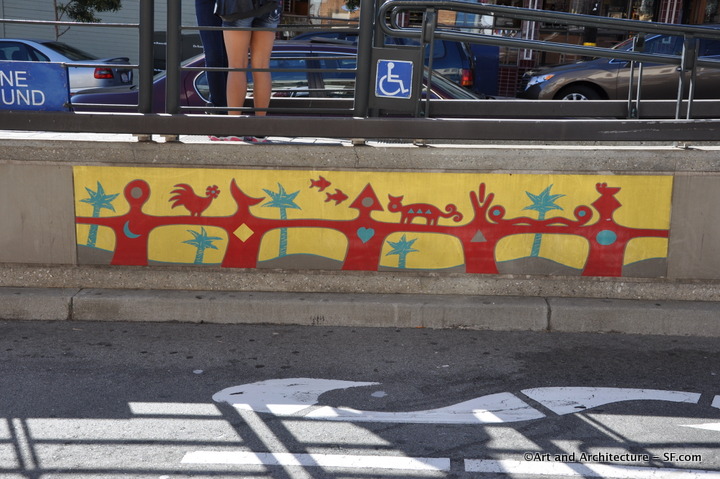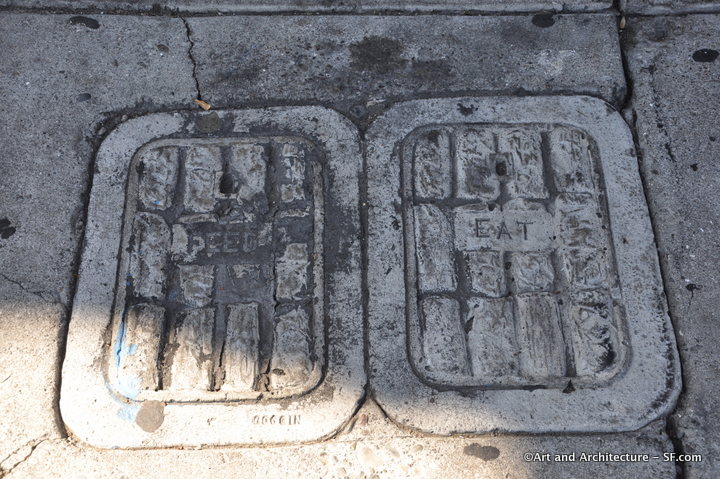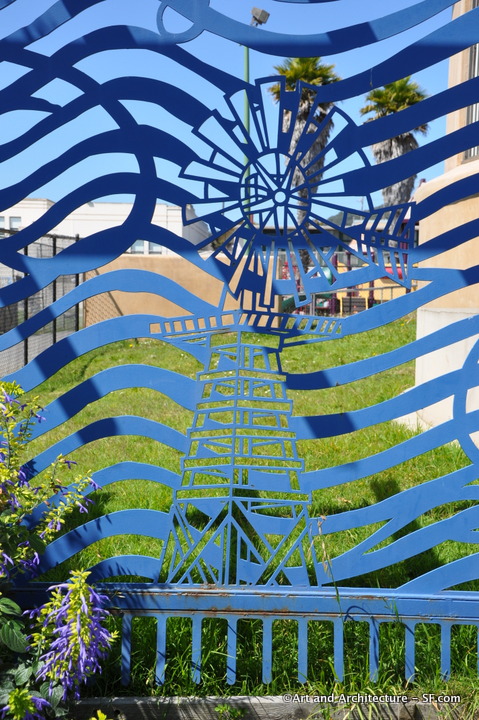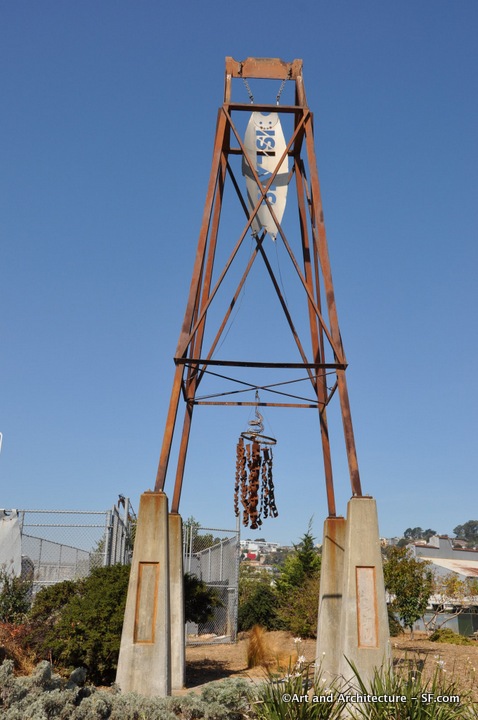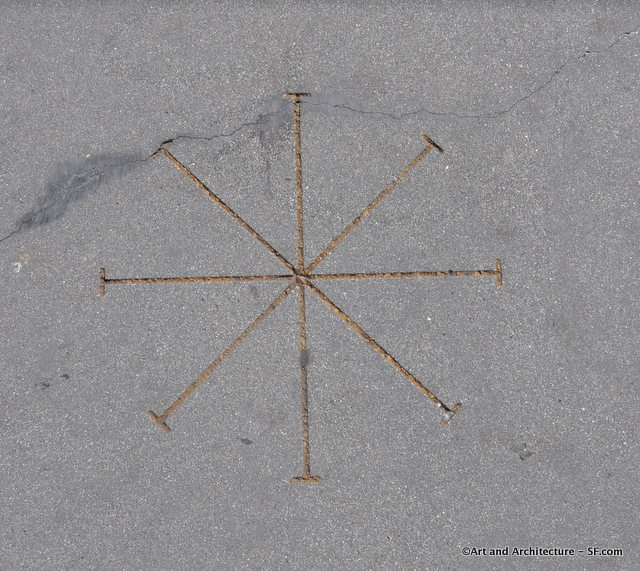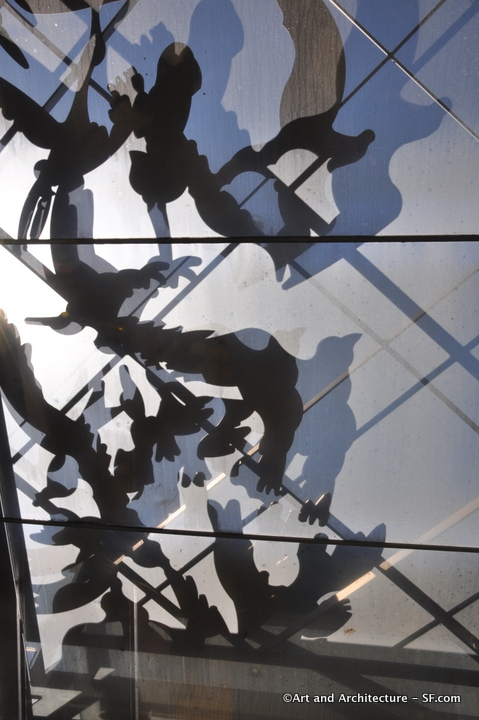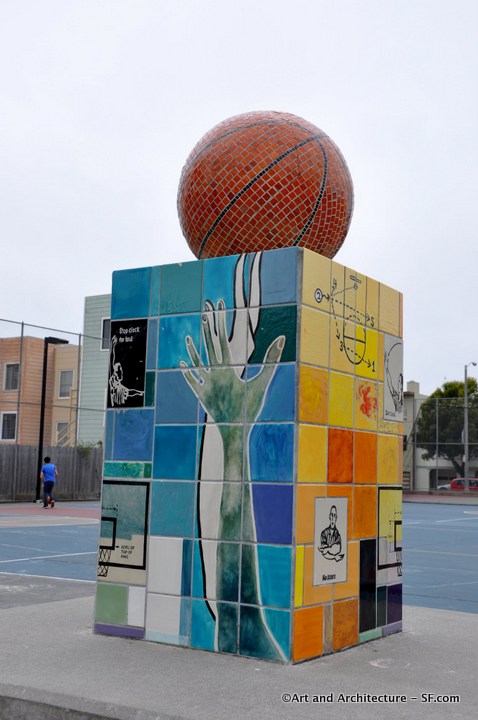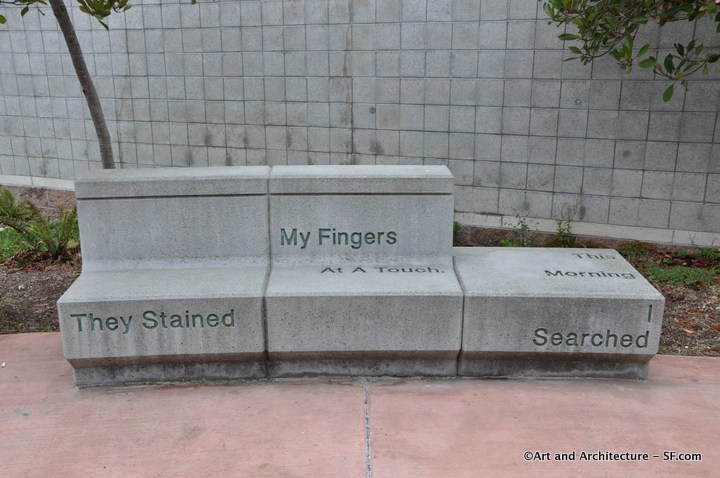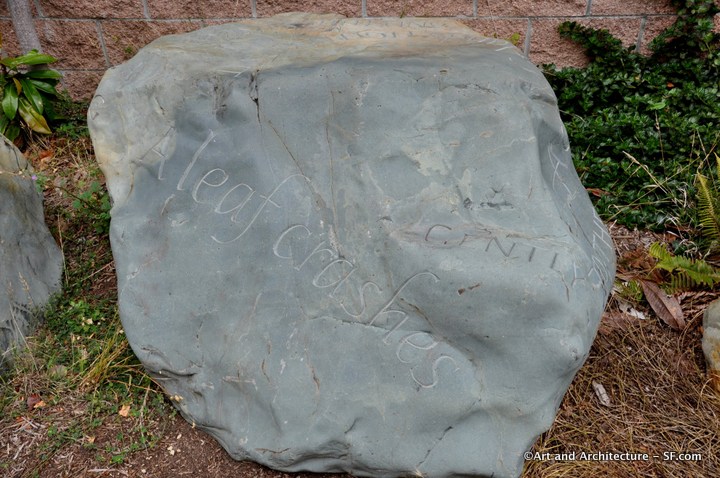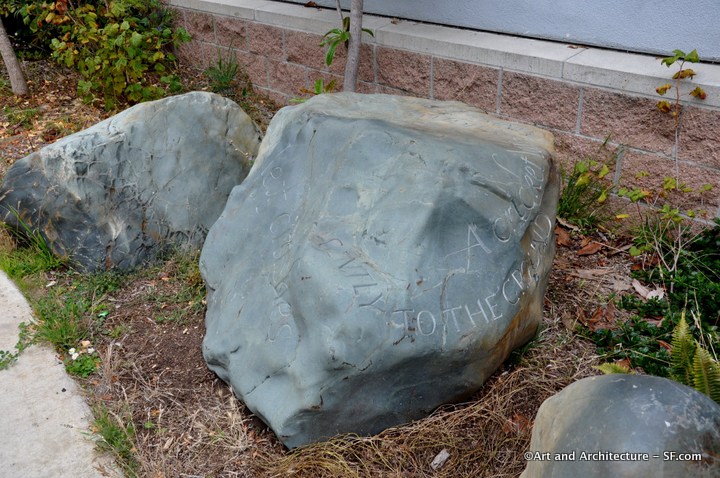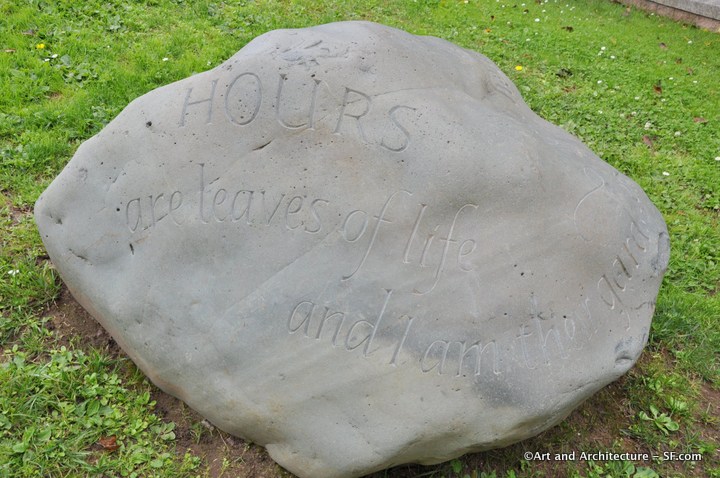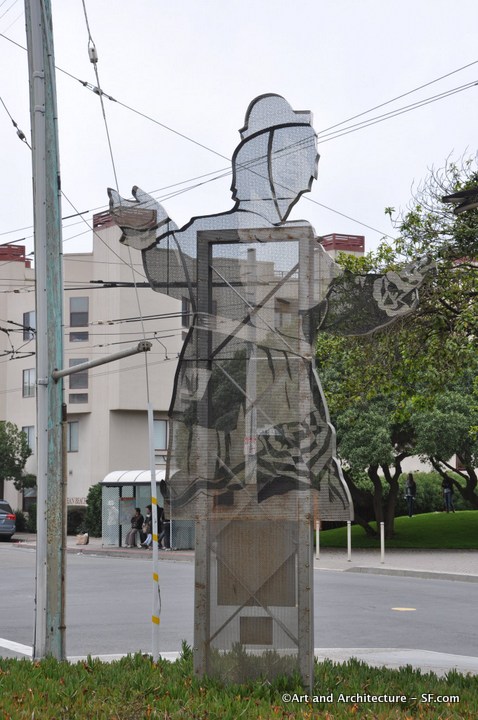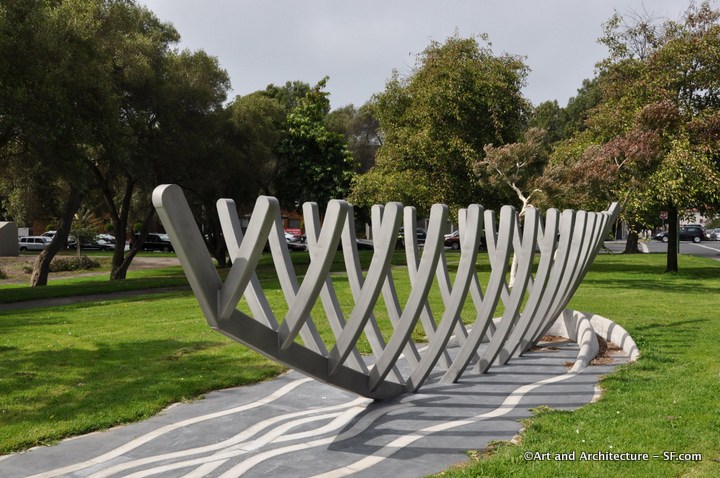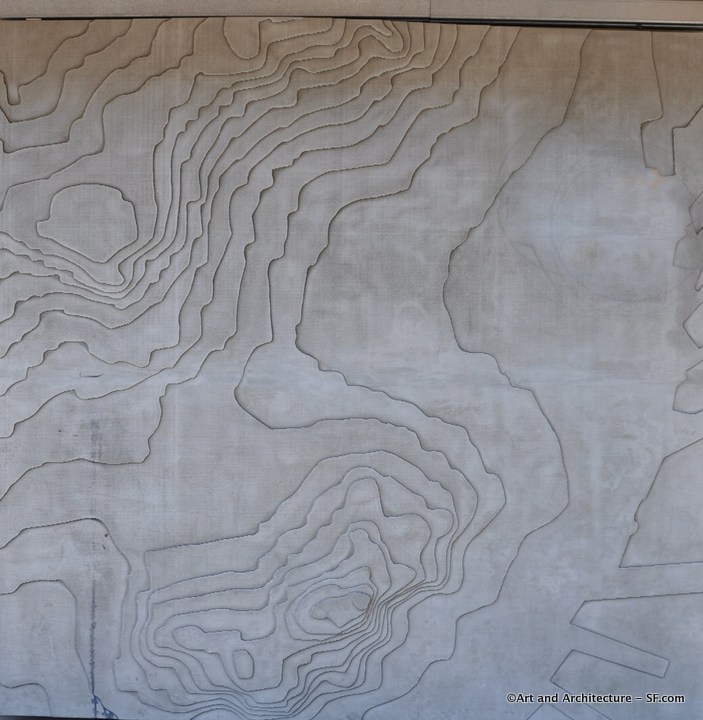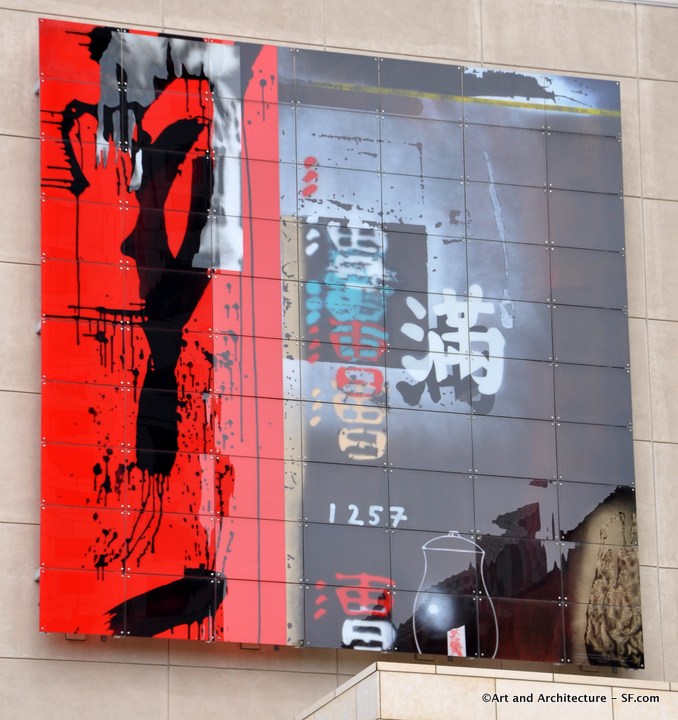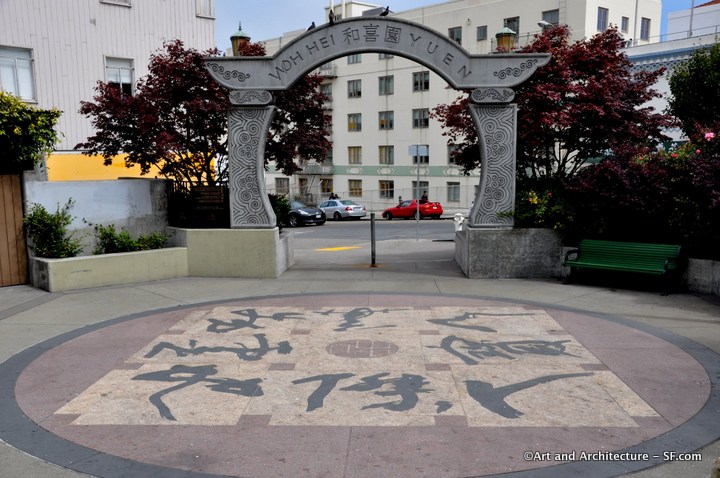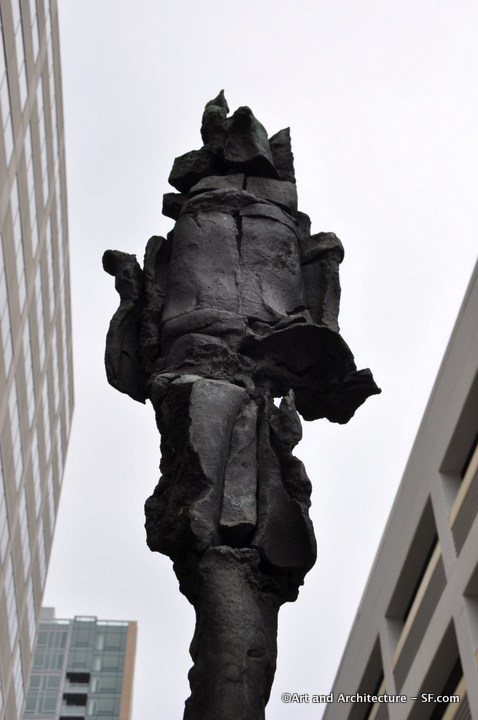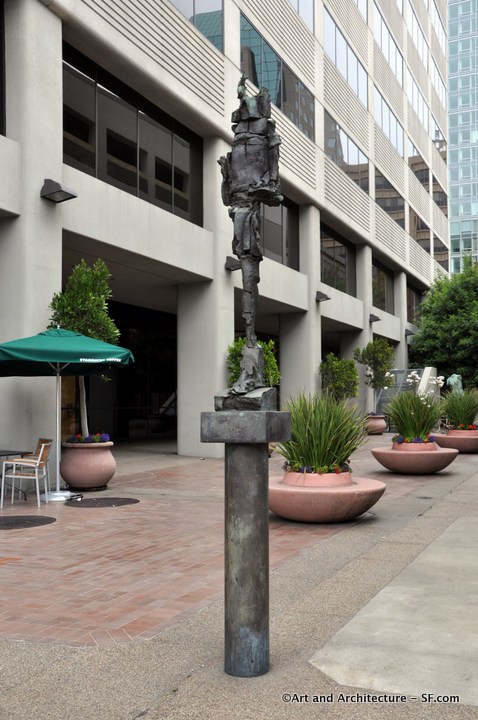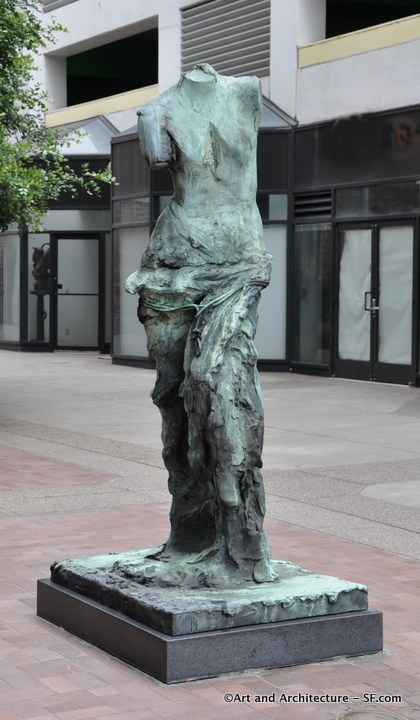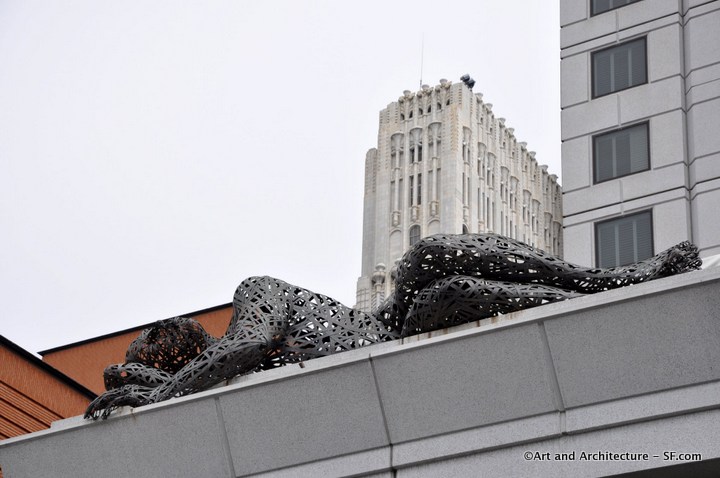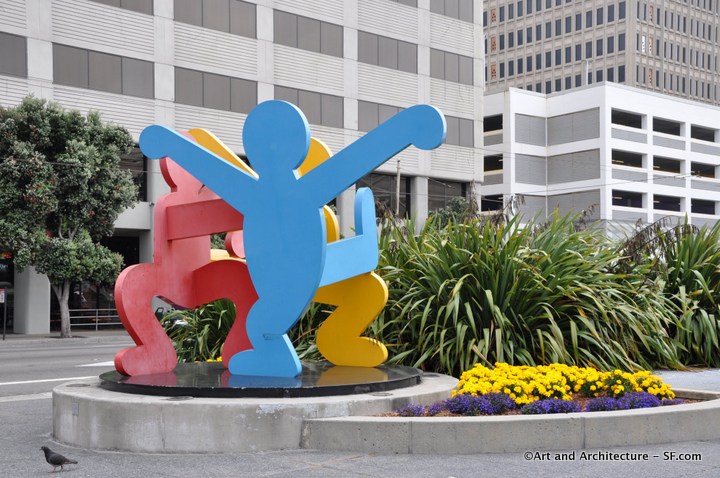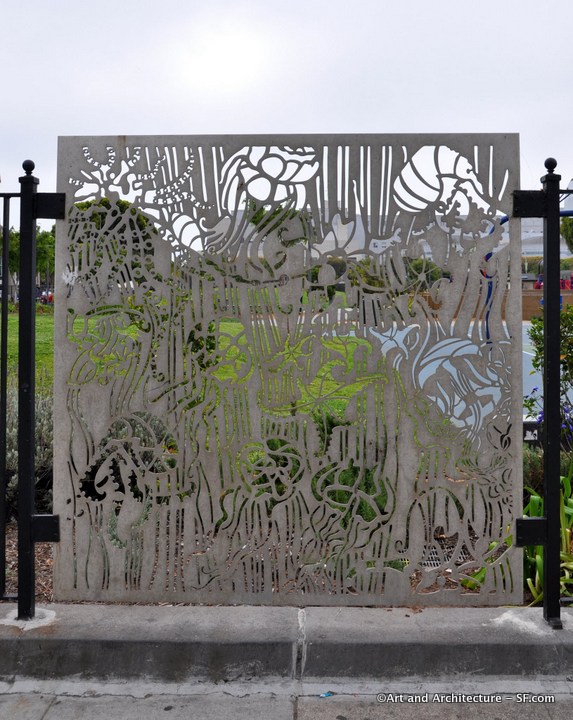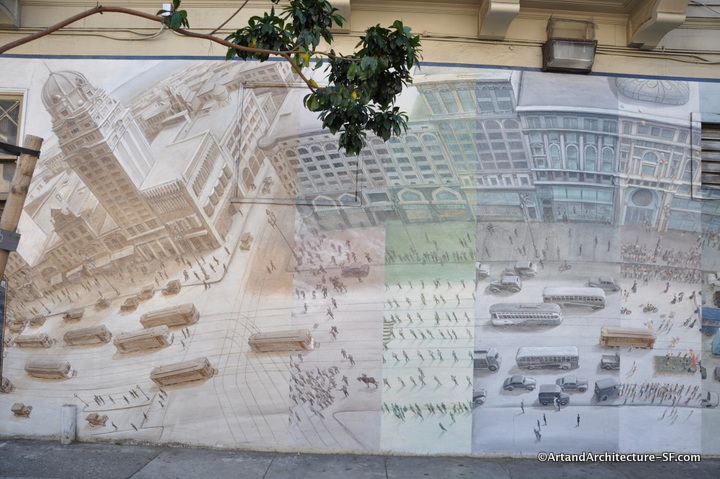 This is Mona Caron’s own description of this wonderful mural.
This is Mona Caron’s own description of this wonderful mural.
The Market Street Railway mural shows a 180-degree bird’s-eye view of San Francisco’s Market Street through time.
The connecting theme of the mural is the historic Market Street Railway: streetcars from the 1920’s are shown traveling the whole length of the mural, passing through different eras and historic events, from their heyday in the 1920’s, through many changes in the traffic composition of Market Street over the years, into the present, and into the future.
The mural seeks to showcase a wide range of uses that Market Street as a public space has been able to accommodate over the years. Examples shown include normal daily life in different eras, a formal parade, a mass demonstration, a free-form celebration, a violent police riot (all based on real events). This is meant as a tribute to the urban center as a place uniquely conducive to both individual and collective expression, a place where history is made and politics become visible. It is also an homage to San Francisco in particular, as a place where people keep inventing new ways of utilizing the streets they share, which is what makes this a vibrant and engaging place to live.
The last section of the mural is a fantasy of what Market Street might look like in the future, with day lighted creeks, new transit modes, repurposed buildings, etcetera.”
I love the clean Venetian canals in this last panel. The mural is dedicated to Dave Pharr, streetcar mechanic and preservationist. This is his obituary, he passed away in 2003.
David L. Pharr, who played a key role in the restoration and operation of the vintage streetcars that run on San Francisco’s Market Street, died Sunday of heart failure at the California Pacific Medical Center. Mr. Pharr, who lived in San Francisco, was 70.
Mr. Pharr was a self-taught expert on the interior workings of electric streetcars, trolley buses and diesel transit vehicles, and he applied it to restoring cable cars and streetcars in partnership with the city’s Municipal Railway.
